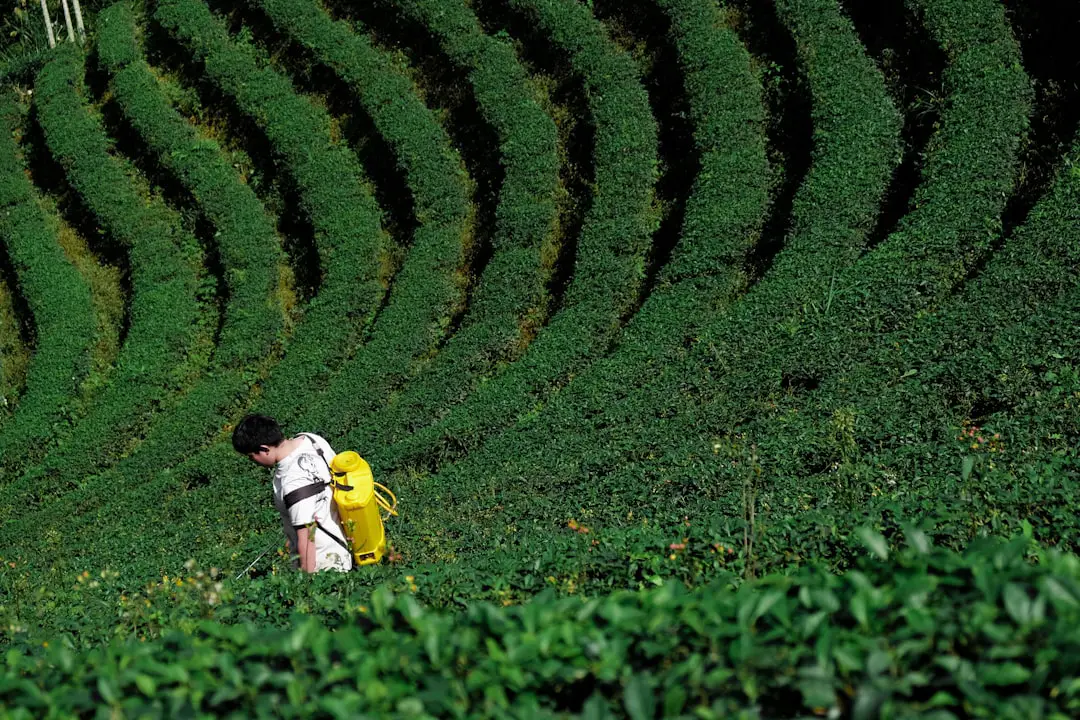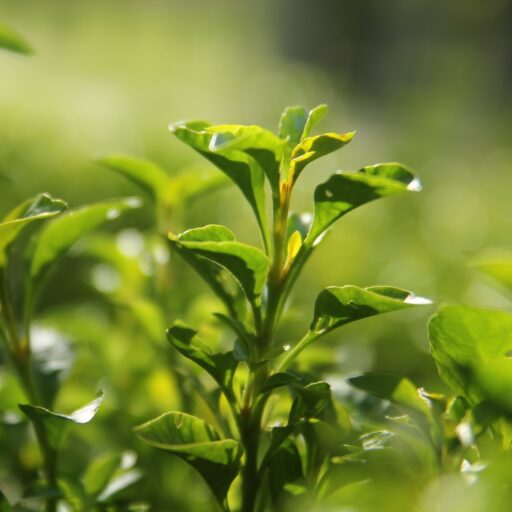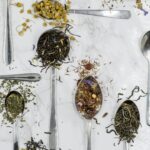Support our educational content for free when you purchase through links on our site. Learn more
Is Growing Tea Difficult? 10 Essential Insights for Aspiring Tea Growers [2024] 🍃

Have you ever sipped a cup of tea and wondered, “Could I grow this myself?” You’re not alone! The thought of cultivating your own tea can be as enticing as the aroma of freshly brewed leaves. But let’s get real—is growing tea difficult? The answer is a bit nuanced. While it can be a rewarding journey filled with fragrant leaves and soothing brews, it also comes with challenges that might make you rethink your green thumb.
Imagine this: you’ve planted your first tea seedlings, nurtured them with care, and after a few years, you’re finally ready to harvest! But wait—what if pests invade? Or what if the climate isn’t right? In this article, we’ll dive deep into the realities of tea cultivation, exploring the essential conditions, common pitfalls, and expert tips to help you succeed. By the end, you’ll be equipped with everything you need to embark on your tea-growing adventure.
Key Takeaways
- Growing tea is rewarding but challenging: It requires patience, as tea plants take 3-5 years to mature.
- Climate and soil are crucial: Tea thrives in specific conditions, particularly acidic, well-drained soil and a moderate climate.
- Pest management is key: Familiarize yourself with common pests and diseases to protect your plants.
- Harvesting and processing are art forms: Learning the right techniques can enhance the flavor of your tea.
- Join a community: Connecting with fellow tea growers can provide invaluable support and resources.
Ready to start your tea-growing journey? Check out our recommended products for tea cultivation:
- 👉 Shop Jiffy-7 Pellets on: Amazon | Walmart | Jiffy Official Website
- Explore more on Green Tea Cultivation: Growing Teas™
With the right tools and knowledge, you can turn your tea-growing dreams into reality! 🌱
Table of Contents
- Quick Tips and Facts about Growing Tea
- The Journey of Tea: A Brief History
- Is Growing Tea Difficult? Understanding the Challenges
- Essential Conditions for Growing Tea: What You Need to Know
- Top 10 Tips for Successful Tea Cultivation
- Common Pests and Diseases in Tea Plants: Prevention and Treatment
- Harvesting and Processing Tea: From Leaf to Cup
- How to Choose the Right Tea Varieties for Your Garden
- Let’s Grow Together: Community and Resources for Tea Growers
- Conclusion: Your Path to Tea Growing Success
- Recommended Links for Tea Enthusiasts
- FAQ: Your Tea Growing Questions Answered
- Reference Links for Further Reading
Quick Tips and Facts about Growing Tea
Growing tea can be as soothing as a cup of Earl Grey on a rainy day, but it comes with its own set of challenges. Here’s a quick rundown to get you started:
- Climate Matters: Tea thrives in tropical and subtropical climates, with temperatures between 60°F to 85°F. Too hot or too cold? Your tea plants might throw a tantrum! 🌡️
- Soil is King: Acidic, well-drained soil is a must. Think of it as your tea plant’s favorite cozy blanket. For more on soil, check out our Soil and Climate for Tea section.
- Patience is a Virtue: Tea plants can take 3-5 years to mature. So, if you’re the impatient type, maybe stick to instant coffee? ☕
- Space for Growth: Tea plants need room to breathe. Plant them 3-5 feet apart for optimal growth.
- Water Wisely: Overwatering is a common mistake. Aim for moist, not soggy soil.
For a deep dive into the art of tea growing, explore our article Can You Grow and Make Your Own Tea? 2023.
The Journey of Tea: A Brief History

Did you know that tea has been around for over 5,000 years? It all started in China when Emperor Shen Nong discovered that boiling water with tea leaves created a delightful drink. Fast forward to today, and tea is the second most consumed beverage worldwide, right after water! 🌍
From the ancient tea horse roads of China to the British afternoon tea tradition, tea has traversed continents and cultures. If you’re curious about the rich tapestry of tea’s past, our History of Tea section is your go-to source.
Is Growing Tea Difficult? Understanding the Challenges
Growing tea isn’t a walk in the park, but it’s not an uphill battle either. Let’s break down the hurdles:
Sustainability Struggles
Tea growers face the pressure of adopting eco-friendly practices due to climate change. Traditional methods, like using polythene bags, harm the environment and plant roots. 🌿
Labor-Intensiveness
Tea cultivation is labor-intensive, requiring significant human effort from planting to harvesting. With labor shortages, maintaining productivity while ensuring worker well-being becomes a juggling act.
Battling Diseases
Tea plants are prone to diseases like blights and root rots. But fear not! Integrated pest management techniques and disease-resistant varieties like Indonesian and Qi Men are here to save the day.
For more insights into tackling these challenges, check out our article on Navigating Challenges of Tea Cultivation.
Essential Conditions for Growing Tea: What You Need to Know
Growing tea requires a delicate balance of conditions. Here’s what you need to ensure your tea plants thrive:
Climate and Temperature
- Ideal Temperature: 60°F to 85°F
- Humidity: Moderate to high humidity levels are preferred.
Soil Requirements
- pH Level: 4.5 to 5.5
- Drainage: Well-drained soil is crucial to prevent root rot.
Sunlight and Shade
- Sunlight: Tea plants love dappled sunlight. Too much direct sunlight can scorch the leaves.
- Shade: Use shade trees to protect plants from extreme temperatures.
For more detailed information, visit our Soil and Climate for Tea section.
Top 10 Tips for Successful Tea Cultivation
Ready to roll up your sleeves and get your hands dirty? Here are our top 10 tips for growing tea like a pro:
- Choose the Right Variety: Not all tea plants are created equal. Pick a variety that suits your climate.
- Prepare the Soil: Test and amend your soil to achieve the right acidity.
- Planting Time: Spring or fall are ideal for planting tea.
- Watering Schedule: Water deeply but infrequently to encourage deep root growth.
- Pruning: Regular pruning helps maintain plant shape and encourages new growth.
- Fertilizing: Use organic fertilizers to nourish your plants without harming the environment.
- Pest Control: Monitor for pests and use natural remedies to keep them at bay.
- Harvesting: Pick leaves when they’re young and tender for the best flavor.
- Processing: Learn the art of processing tea to enhance its flavor profile.
- Patience: Remember, good things take time. Enjoy the journey!
Common Pests and Diseases in Tea Plants: Prevention and Treatment
Tea plants, like any other, have their fair share of adversaries. Here’s how to keep them at bay:
Common Pests
- Tea Mites: These tiny critters can cause significant damage. Use neem oil as a natural remedy.
- Aphids: A gentle spray of soapy water can help keep aphids in check.
Diseases
- Root Rot: Ensure proper drainage to prevent this common issue.
- Blight: Remove infected leaves and use copper-based fungicides.
For more detailed pest management strategies, explore our Green Tea Cultivation section.
Harvesting and Processing Tea: From Leaf to Cup
The moment you’ve been waiting for—harvesting your tea! Here’s a step-by-step guide:
Harvesting
- Timing: Pick leaves in the early morning when they’re freshest.
- Technique: Pluck the top two leaves and a bud for the best quality tea.
Processing
- Withering: Spread leaves on a rack to reduce moisture content.
- Rolling: Gently roll leaves to break down cell walls and release flavors.
- Oxidation: Allow leaves to oxidize for black tea, or skip this step for green tea.
- Drying: Dry leaves to halt oxidation and preserve flavor.
For more on the nuances of tea processing, visit our Can You Grow and Make Your Own Tea? 2023 article.
How to Choose the Right Tea Varieties for Your Garden
Choosing the right tea variety is like picking the perfect outfit for a first date—it’s crucial! Here’s what to consider:
Climate Compatibility
- Camellia Sinensis Sinensis: Ideal for cooler climates.
- Camellia Sinensis Assamica: Prefers warmer, tropical climates.
Flavor Profile
- Green Tea: Light and grassy, perfect for those who enjoy a mild flavor.
- Black Tea: Bold and robust, for those who like their tea with a punch.
For more on selecting the right variety, explore our Herbal Tea Planting section.
Let’s Grow Together: Community and Resources for Tea Growers
You’re not alone in this tea-growing adventure! Join a community of fellow enthusiasts and access a wealth of resources:
- Online Forums: Connect with other growers on platforms like Reddit and gardening forums.
- Workshops and Courses: Attend local workshops or online courses to hone your skills.
- Local Clubs: Join a tea growers’ club in your area for support and camaraderie.
For more resources, check out our Health Benefits of Tea section.
With these insights and tips, you’re well on your way to becoming a tea-growing aficionado. Stay tuned for the conclusion, where we’ll wrap up our tea-growing journey and offer some final recommendations!
Conclusion: Your Path to Tea Growing Success

Growing tea may present its challenges, but the rewards are undeniably worth it! You’ve learned about the essential conditions for cultivation, the common pests and diseases, and how to properly harvest and process your tea. While it can be labor-intensive and requires patience and commitment, the joy of sipping a cup of tea you’ve nurtured from seed to sip is unparalleled.
Summary of Positives and Negatives
Positives:
- Satisfaction: There’s immense satisfaction in growing and harvesting your own tea.
- Health Benefits: Freshly grown tea can be more flavorful and beneficial than store-bought varieties.
- Sustainability: You have control over your cultivation practices, allowing for eco-friendly choices.
Negatives:
- Time-Consuming: It takes several years for tea plants to mature.
- Labor-Intensive: Tea cultivation requires significant manual effort, which may not suit everyone.
- Vulnerability to Pests/Diseases: Without proper management, your plants can fall victim to various ailments.
In conclusion, if you have the passion and patience, we wholeheartedly recommend you embark on this rewarding journey of growing tea! 🌱
Recommended Links
- 👉 Shop Jiffy-7 Pellets on: Amazon | Walmart | Jiffy Official Website
- Books on Growing Tea: The Tea Book: All Things Tea | Tea: A Global History
FAQ: Your Tea Growing Questions Answered

How hard is it to grow your own tea?
Growing your own tea can be challenging but rewarding. It requires patience, as tea plants take several years to mature. You’ll also need to understand the specific climate and soil conditions they thrive in. However, with the right resources and community support, it’s definitely achievable!
Read more about “How hard is it to grow your own tea?”
What is the easiest tea to grow?
Herbal teas, such as mint or chamomile, are generally the easiest to grow. They require less specific conditions and can thrive in a variety of climates. If you’re looking for traditional tea, Camellia sinensis (green tea) is also manageable in the right environment.
Read more about “What is the easiest tea to grow?”
What are the disadvantages of tea farming?
Some disadvantages include:
- Labor-Intensiveness: Tea farming requires a lot of manual labor, which can be difficult to sustain.
- Vulnerability to Climate: Tea plants are sensitive to extreme weather conditions, which can affect yields.
- Market Fluctuations: The tea market can be volatile, impacting profitability for growers.
Read more about “Is Tea Farming Profitable? 10 Secrets to Success Revealed … 🍵”
Can you grow tea trees in the USA?
Yes, you can grow tea trees in the USA, particularly in southern states like California, Florida, and Texas, where the climate is suitable. However, ensure you select the right variety suited to your local conditions.
Read more about “Is It Easy to Grow Your Own Tea? 10 Essential Tips for Success in 2024! 🌱”
How long does it take for tea plants to produce leaves?
Tea plants typically take 3 to 5 years to start producing leaves suitable for harvest. Patience is key, but the wait is worth it for the unique flavors you’ll enjoy!
What type of soil is best for growing tea?
Tea plants prefer acidic, well-drained soil with a pH of 4.5 to 5.5. Amending your soil to meet these requirements will help your plants thrive.
Read more about “Why Isn’t Tea Grown in the US? 7 Reasons You Might Be Surprised By … 🍵”
Reference Links
- Jiffy Group – Navigating Challenges of Tea Cultivation
- MasterClass – Growing Tea: 7 Tips for Growing Tea Plants at Home – 2024
- The Spruce – How to Grow Tea Plants
- Gardener’s Path – Growing Tea: A Complete Guide
- Growing Teas™ – Health Benefits of Tea
With this comprehensive guide, you’re now equipped to take on the world of tea cultivation. Happy growing! 🍃



